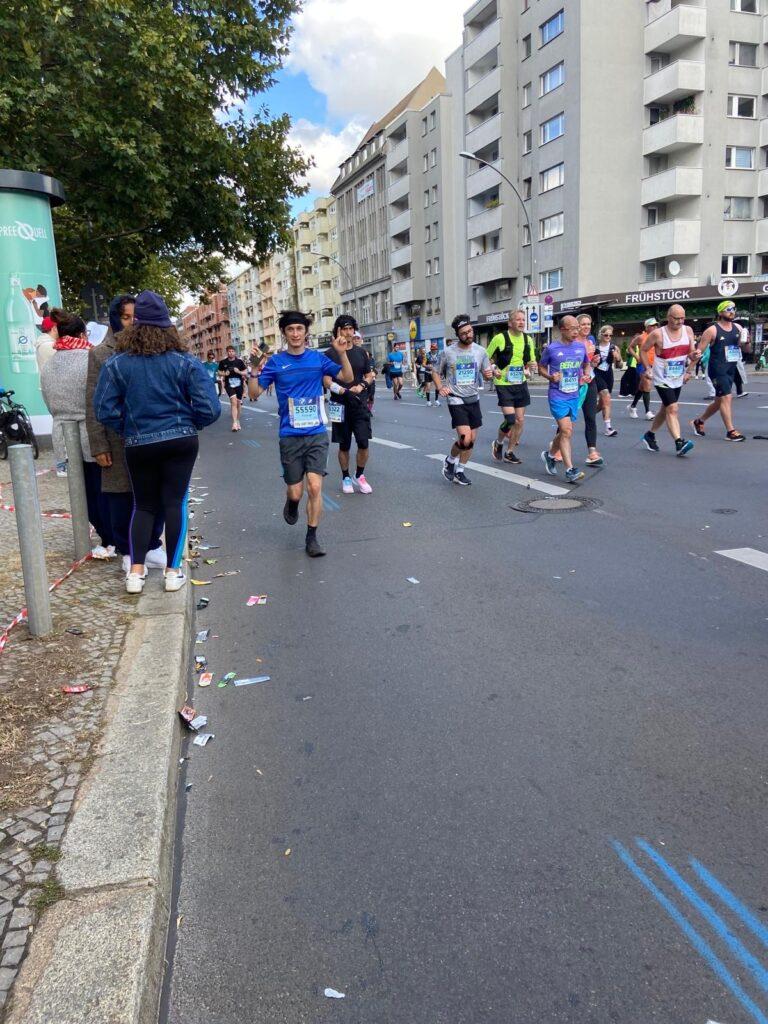Finnian “Finn” Charlton-Jones has achieved an incredible milestone by completing the 2024 Berlin Marathon. Not only did he successfully finish this challenging race, but he also raised over $2,000 for the Visual Snow Initiative (VSI) to support Visual Snow Syndrome (VSS) research and awareness.


What Inspired Finn to Run the Berlin Marathon?
For Finn, running the Berlin Marathon was driven by many reasons.
“It was important to me to make some kind of tangible contribution and raise awareness for Visual Snow. I also wanted to prove something to myself and use it as a way to quit smoking,” he said. His friends and family, who had run marathons before, inspired him to take on the challenge.
Finn began training for the marathon three months before race day. He ran two to three times a week, doing short runs of 5 miles (8 kilometers) and longer runs that increased each week. Two weeks before the race, he ran 20 miles (32 kilometers).
When Finn finally crossed the finish line, he felt unexpectedly calm. But running through the famous Brandenburg Gate, with the sun shining, gave him a strong sense of accomplishment.
Advice for Future Fundraisers
For anyone wanting to fundraise for Visual Snow Syndrome research and awareness, Finn’s advice is simple:
“You need an online platform that helps. Luckily with visual snow, VSI provided me with a fundraising page. Then, you just let friends and family know, and their support should get you pretty far.”
If you are interested in supporting the Visual Snow Initiative or running your own fundraiser, you can get involved here.



Creating the Visual Snow Simulator
Another major achievement of Finn’s is the Visual Snow Simulator. Now accessible on the VSI website, the Visual Snow Simulator is a valuable resource that helps people experience and visualize what it is like to live with VSS. This helpful tool makes the condition easier to understand or explain to others, including friends, family, doctors, workplaces, and more.
“The simulator helps others see what we see and reduces the feeling of being alone or misunderstood,” Finn explained. “The nature of the condition means that it’s difficult for people to understand what it’s like for those affected. The simulator is an attempt to bridge that gap and reduce the sense of alienation and isolation. Maybe it’s okay to see a bunch of static all the time, if the person does not experience it in a context of isolation and worry. That is my thinking.”
While Finn’s happy with the current version, he’s open to the idea of creating a 3D experience in the future, where users can walk around in a world that simulates Visual Snow Syndrome.
Takeaway and Message for the VSS Community
Having contributed to awareness and research for VSS, Finn is happy to have “done his bit” and made a positive difference for the future of this condition.
“You have the power to ignore the thoughts that provoke worry and rumination. Excessive self-focus can drag you down into aggrieved victimhood. Look around you, everybody needs uplifting.”
If you would like to support Finn’s efforts or contribute to VSS research, you can make a donation here.
Congratulations and thank you to Finn!


